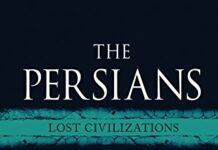
Ebook Info
- Published: 1996
- Number of pages: 288 pages
- Format: PDF
- File Size: 10.85 MB
- Authors: Geoffrey Parker
Description
Well before the Industrial Revolution, Europe developed the superior military potential and expertise that enabled her to dominate the world for the next two centuries. In this attractively illustrated and updated edition, Geoffrey Parker discusses the major changes in the military practice of the West during this time period–establishment of bigger armies, creation of superior warships, the role of firearms–and argues that these major changes amounted to a “military revolution” that gave Westerners a decided advantage over people of other continents. A new chapter addresses the controversies engendered by the previous edition.
User’s Reviews
Editorial Reviews: Review “…this is a genuinely admirable book, and every student of military history, whatever his specialization, ought to read it cover to cover….Re-reading Parker’s Military Revolution I am again struck by its brilliance, range and craft; by ambition fulfilled….A second, updated edition of Geoffrey Parker’s The Military Revolution deserves a warm and thoughtful welcome by all historians. An author of rare linguistic range and command of primary sources, his masterful ability to construct comparisons and unearth new data has compelled many who would not call themselves military historians to take the “Military Revolution” paradigm (and military history) seriously…a seminal work.” The Journal of Military History”…this is a generally admirable book, and every student of military history, whatever his specialization, ought to read it cover to cover. Nobody has succeeded as well as parker in portraying the growth of European military power in the Early Modern Epoch.” Thomas M. Barker, The Journal of Military History”Re-reading Parker’s Military Revolution I am again struck by its brilliance, range and craft; by ambition fulfilled….I am more than impressed by the insights, scope and scholarship of Parker’s book; it is a work that has inspired much of my interest in the subject.” Jeremy Black, The Journal of Military History”I strongly commend this book to all historians. I can only wish others, reading The Military Revolution for the first time, will find it as stimulating as I found Geoffrey Parker’s works when I first encountered them.” Weston F. Cook, Jr., The Journal of Military History Book Description A new edition of Geoffrey Parker’s illustrated history of the impact of western warfare 1500–1800.
Reviews from Amazon users which were colected at the time this book was published on the website:
⭐It is a complete perspective on the evolution of the warfare with the introduction of the gun powder and the new fortresses. Full of historical references for further sources. The three-star evaluation is due to the bad condition of the book. I bought a “like new”, but it did not deserve more than “good” state, as it arrived full of undermarkings, quite disturbing.
⭐Does a book of this caliber need a review? It is perfect and thought provoking. It opened a whole new field of study for me.
⭐Amazing book, very informative about the military revolution that took place during the 16th century.
⭐Perfect buy.
⭐Professor Parker has come in for a lot of criticism for this book over the years – see Jeremy Black –
⭐- published in 1991, for examples. I remeber having some doubts about it myself when it was first published. Professor Parker noted that being unfamiliar with oriental languages, he had made use of his students to research the chapters on eastern Asian developments. I thought at the time that perhaps he had made to much use of them on the western chapters, also, as in one of them, he made use of a long passage from Jonathan Israel’s
⭐, to support his theory on the Trace Italiene. However, I had just read thet book, and remembered that Israel had come to the exact opposite conclusion to Parker.Some years later, I came across an article in the Mariner’s Mirror (volume 82, #3, August 1996) by Professor Parker, entitled “The Dreadnought Revolution of Tudor England” (pp. 269-300), which described the advent of the first ‘all-big-gun battleship’. The next article was by N.A.M. Rodger, entitled “The Development of Broadside Gunnery 1450-1650” (pp. 301-324), which to me seemed to take some of the wind out of the sails of the predeeding article. Professor Parker wasn’t appearing to have much luck with his theses.It was only many years after that, that I realised that despite his theories being heavily revised or refuted, what he was succeeding in doing was getting people to do research and dig even deeper into the subject under discussion, to the benefit of research in general and us readers in particular. How mmany good books would not have been launched without Parker (and Roberts before him) prodding at the boundaries?Jeremy Black –
⭐Pages 10-12:”The battles of the Thirty Years War, unlike some of the famous encounters in the Italian wars, were not generally determined by different tactics and weaponry. Instead their results reflected differing experience and morale and if forces were fairly evenly matched in terms of veterans they were either inconclusive encounters or determined by other factors such as terrain, the availability and employment of reserves and the results of the cavalry encounters on the flanks which, if conclusive, could lead to the victorious cavalry attacking their opponent’s infantry in flank or rear, as happened at the Spanish defeat at Rocroi (1643). Duke Bernard of Saxe-Weimar, a German prince who served Sweden in 1630-5 before transferring with the army he had raised to French service, won a number of battles by outmanoeuvring his opponents, outflanking them and attacking them from the rear. At Jankov (1645) the Swedes under Torstensson were initially unable to defeat the Austrian force, which was also about 15,000 strong, but finally won as a result of outmanoeuvring their opponents and attacking them from the rear. The Austrians lost their army, the Swedes benefitted from tactical flexibility of their more experienced force.Indeed victory commonly went to the larger army and the more experienced force rather than to that which had adopted Dutch-style tactics. At Rocroi there were 24,000 French to 17,000 Spaniards; at the White Mountain (1620) 28,000 in the army of the Catholic League against 21,000 Bohemians and German Protestants; at Nordlingen (1634) 33,000 Catholics to 25,000 Protestants; at Breitenfeld Gustavus Adolphus outnumbered his opponents by 42,000 to 35,000. Breitenfeld was the largest battle, in terms of manpower, of the war and exceptionally so for a conflict in which field armies were rarely more than 30,000 strong and the creation of larger forces posed major logistical problems. Lutzen (1632), where the two forces were about the same, each 19,000 strong, was partly for that reason essentially inconclusive.The Saxons at Breitenfeld adopted the Dutch tactics of small units deployed in relatively narrow formations, but they broke when the Austrians attacked. Ernest, Count of Mansfeld, a leading anti-Habsburg general of the early years of the war, also adopted Dutch tactics without conspicuous success. Victory tended in general to to larger armies, especially if more experienced, as the Spaniards, Swedes, Weimarians and some of the Austrian and Bavarian units were. Saxe-Weimar rejected the Dutch tactics and in the late 1630s used his heavily cavalry-based army, which was essentially self-sustaining, to fight in an aggressive fashion. Thus, consideration of the battles of the period suggests that Roberts’ stress on new infantry tactics is misleading.”James Raymond was a student of professor Black, and as I have noted in my Amazon review of his book
⭐, he is acquainted with many people who have published on the subject since this book was written. In his Conclusion, Mr Raymond writes “One cannot escape the relative merits of what one might term the ‘evolutionary model’ of military development. Throughout the early modern, and indeed medieval, period, continuity appears to be the dominant theme – as opposed to any sudden revolutionary change – in continental military practice. Such a view for the period 1494-1559, was recently endorsed by J. Black who concluded that a “consideration of the warfare of the period suggests that ‘military adaption’ is a more appropriate term than revolution” (European Warfare, 1494-1660 (Warfare and History)”) And Mr Raymond concludes “The military revolution debate, like any other form of historical classification has provided a necessary and thought-provoking framework. However the profusion of alternative interpretations has ensured the concept now bears little resemblance to any reasonable definition of a revolution. It seems fair to conclude that the original notion of an early modern European ‘military revolution’ is now defunct.This book is still worth reading today, albeit with caution in places, but the revolution of yesterday has now become evolution in action.
⭐Geoffrey Parker work can be considered a milestone in its field. A really excellent book.
⭐Geoffrey Parker argues that during the 16th Century a “military revolution” occurred that profoundly changed the way Europeans conducted warfare. This revolution involved four distinct changes in the art of war: a change in tactics; a marked growth in the size of armies; more ambitious and complex military/political strategies; and an acute impact on society as a whole. Parker further contends that the initial imperial gains and conquests by European nations (before the full impact of the Industrial Revolution was felt) would not have been possible had it not been for these revolutionary changes. Not all historians of early modern European military history agree with Parker’s argument. In the Second Edition, Parker answers his critics in an updated addendum (for those who enjoy conversational footnotes, Parker does seem to have a particular axe to grind with the historian John A. Lynn and vice-versa)..Parker incorporates a thread of cause and effect to illustrate his claims. For example: the technological advancements in firepower in the form of larger canons, prompted the wide spread development of the bastion fortifications system known as trace italienne. These improved fortifications required larger garrisons as well as larger siege armies of the opposing enemy. Infantry became the core of these new and expanded armies of Europe. Larger armies created the need for revised tactics as well as improved logistical, supply, medical, and financial solutions. All of these factors had a direct upon the societies that depended upon these armies for protection. Parker applies similar cause and effect methodology in a discussion of sea power. Though Parker is a known scholar of early modern Europe, he turns his analysis into a global study by comparing and contrasting the European art of war with various non-western armies and empires. Parker discusses the reactions, adaptations, successes or failures of Near Eastern (Muslim, Ottoman, Indian, and African) and Far Eastern (China, Japan, Southeast Asia) armies in their contacts with the west.Parker consults a vast array of archival material. From Machiavelli to an assortment of 16th Century French, Spanish, Dutch, German and British documents in varying native languages, Parkers research is truly impressive. Absent, however, are non-western sources turning this “global” analysis into one from a western perspective. European colonial contacts with the east are seen only through western eyes in Parker’s study. Sprinkled throughout the book are period etchings and engravings that Parker utilizes to support his premises. As an art history lover, however, I would have liked to have seen a description of the art work itself in the caption.Parker writes well. The author blends a well developed scholarly argument with historical narrative with great effect. For the most part, Parker maintained a set literary style throughout that held the reader’s interest. One flaw, however, is the author’s tendency to make a point early in a paragraph, then support his claim with a “list” of obscure little known European battles. One would have to be well versed in European military history to be on the same page with Parker on these rare instances. A solution would be to “list” fewer examples and explain “why” this particular battle supports the point he is illustrating.This is a must read for the serious student of military history though not for the faint of heart.
⭐There are already some good reviews, so I will only suggest reading the following books on war in addition to Parker’s: a) “War in human civilization” by Azar Gat; b) “War before Civilization. The Myth of the Peaceful Savage”, by Lawrence Keeley; c) “How War Began” by Keith F. Otterbein; d) “War and Peace and War: The Rise and Fall of Empires” by Peter Turchin; and e) “War and the Law of Nations: A General History” by Stephen Neff.
Keywords
Free Download The Military Revolution: Military Innovation and the Rise of the West, 1500-1800 2nd Edition in PDF format
The Military Revolution: Military Innovation and the Rise of the West, 1500-1800 2nd Edition PDF Free Download
Download The Military Revolution: Military Innovation and the Rise of the West, 1500-1800 2nd Edition 1996 PDF Free
The Military Revolution: Military Innovation and the Rise of the West, 1500-1800 2nd Edition 1996 PDF Free Download
Download The Military Revolution: Military Innovation and the Rise of the West, 1500-1800 2nd Edition PDF
Free Download Ebook The Military Revolution: Military Innovation and the Rise of the West, 1500-1800 2nd Edition





